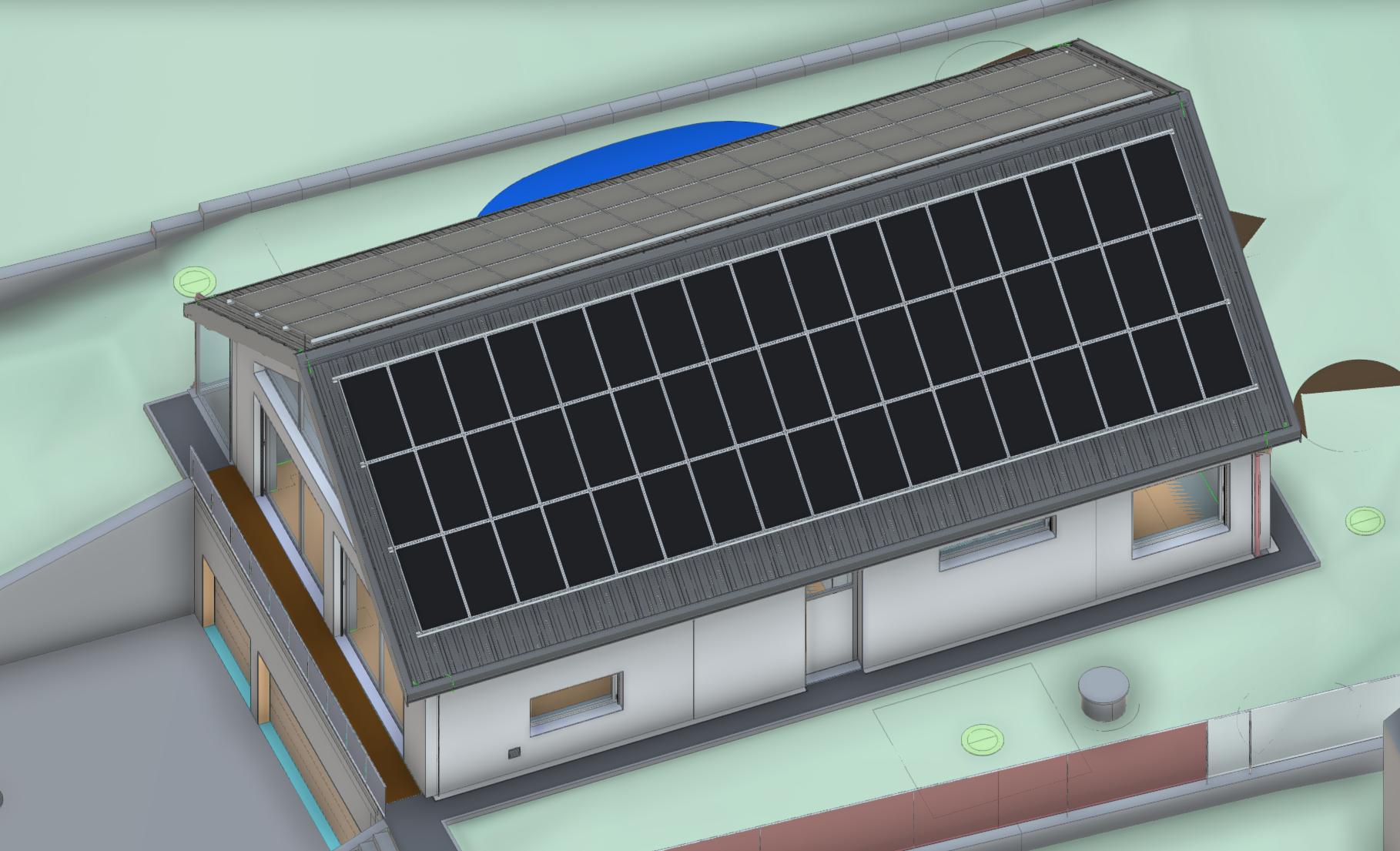Fill up the roof!
It's not your needs that determine the size of the plant - it's the other way around. But don't worry, you don't have to limit yourself - on the contrary.

Assuming (and if necessary, checking) that the statics of the house or garage roof do not prevent the installation of PV panels, the available PV-relevant areas are filled up.
If, for example, 30 panels will fit on the roof, then 30 panels will be installed and not just 24, just because someone thought they had calculated the exact requirement. There are several reasons why it makes sense to cover the whole roof with PV instead of just a part of it.
- Full roof coverage maximizes energy production - always. So both in summer and in winter.
- If done skillfully, a full roof covering can also improve the aesthetics of the building. Instead of a patchwork carpet, homogeneous surfaces can be created.
- The price of the PV modules plays only a minor role in an installation today. The costs for the mechanical and electrical installation, on the other hand, are much more important. If you have already installed the scaffolding or have the craftsmen "on the roof", it makes no economic sense to skimp on the proportionally cheapest material.
Actually, it is even wrong to speak of the "proportionally cheapest material" in PV. Strictly speaking, the PV modules are the value creators. If the energy from the PV modules were magically delivered to the consumers in the household (i.e. only PV modules were needed without installation, batteries, inverters, etc.), then the payback period would be one, at most two years!
Consequently, systems that have proportionally more PV area also tend to have a better price-performance ratio. Electricity storage is great and necessary and we love big electricity storage, but electricity storage doesn't generate electricity - PV modules do.
Land consolidation
It even makes sense to increase the area that is apparently available. Many roofs are not designed with maximum PV use in mind. In this regard, dormers are a well-known problem, but by no means the only one:
- The rungs or climbing aids for the chimney sweep are on the south side, although one could also reach a chimney centrally located on the gable from the north side, for example.
- Vent pipes that look like small chimneys and are distributed all over the roof - there have long been flat solutions that also fit under the PV.
- Snow guard devices are sometimes necessary, but not always.
- Antennas and satellite dishes can sometimes be moved to avoid shading.
- Decommissioned chimneys "can it go away?"....
- and many more
PV power is the basis
Only after the achievable and reasonable (see below) PV capacity of your installation has been determined, the foundation for the dimensioning of your private power plant has been laid.
Only then does it make sense to determine the battery capacity, only then can you dimension solar charge controllers and only then can you make reliable statements about how far the yield of this power plant will take you, or what new possibilities it will open up for you and your family in the first place.
Is there too much PV area?
Of course, but the limits are far above what is commonly understood today (as of early 2023) as a "normal PV system for a family". Assume the following PI*thumb reference values in Central Europe:
- A <5kWp/person - Alibi plant, this is what most plants look like today.
- B 5-9kWp/person - reasonable, you can already do a lot with it
- C ~10kWp/person - well dimensioned, you are satisfied with the plant
- D 11-20kWp/person - only in special circumstances for special needs.
- E >20kWp/person - silly and unnecessary, with very exotic exceptions.
Approx. 4.5m² per kWp are required, a family of 3 with 30kWp requires 135m² installation area. By the way, not necessarily, or even relatively rarely exclusively oriented to the south. There are east/west installation and solar fences rather means of choice - see here.
PetaJoule is specialized in plants of the classes B-D. Of course - if you simply don't have the installation space - we will be happy to help you design a class A system to get the most out of it for you.

